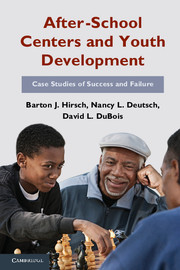1 - The Quality of After-School Centers
Published online by Cambridge University Press: 05 June 2012
Summary
Youth programs can be found in abundance throughout our communities. Nowhere, however, are they more prevalent than in the after-school arena. The past decade has witnessed explosive growth in after-school programs. The federal government launched a billion-dollar initiative, the 21st Century Community Learning Centers. California’s Proposition 49 channeled more than 400 million additional dollars to after-school programs. Several major foundations have put after-school programs at the core of their concerns. And city after city is scaling up its after-school programs. Much of this growth has involved after-school centers that typically are home to a wide array of programs and services. These include the Boys & Girls Clubs of America, which more than doubled the number of its clubs, from 1,800 in 1997 to 4,000 in 2008. Clearly there is a push to make after-school programs part of the educational and youth services infrastructure. We believe in the promise of after-school programs but also are concerned about the pitfalls. We have seen both good programs and bad programs, strong centers and weak centers. It is critical to understand the factors that lead to quality and to positive youth outcomes if the after-school movement is to be built on a solid foundation.
It is easy to appreciate the push for more after-school programming. This is especially true for the school-age adolescents in low-income urban communities who we studied in this research. These young people need to cope with violence and poor schools on a daily basis. Job opportunities are often few and far between. Adult role models can be in short supply as the middle class has largely abandoned these neighborhoods, many men are in prison, and parents often have work shifts that leave little time for guidance and support. After-school programs hope to step into these gaps and supplement what youth receive from family and school.
- Type
- Chapter
- Information
- After-School Centers and Youth DevelopmentCase Studies of Success and Failure, pp. 3 - 30Publisher: Cambridge University PressPrint publication year: 2011



